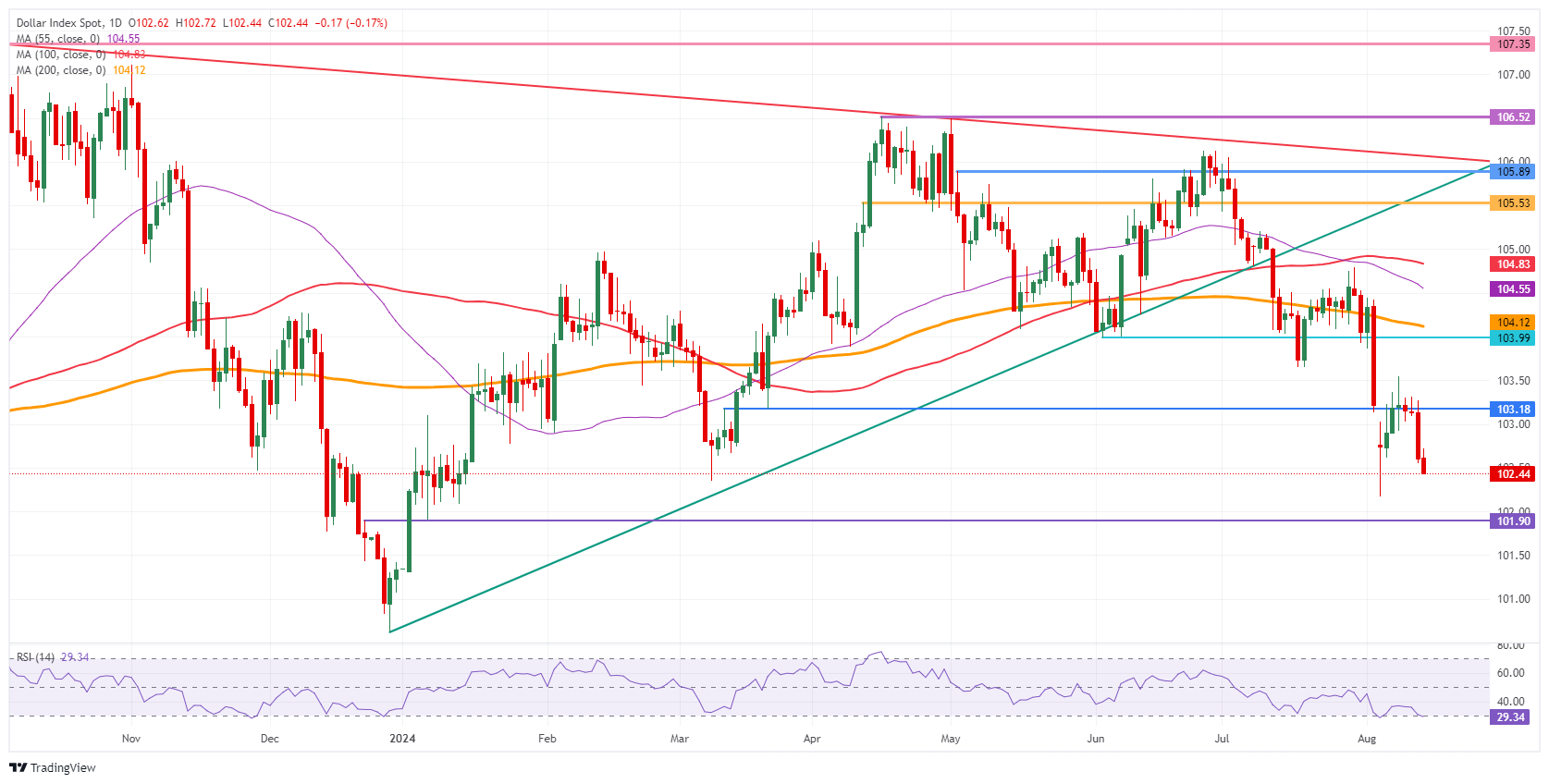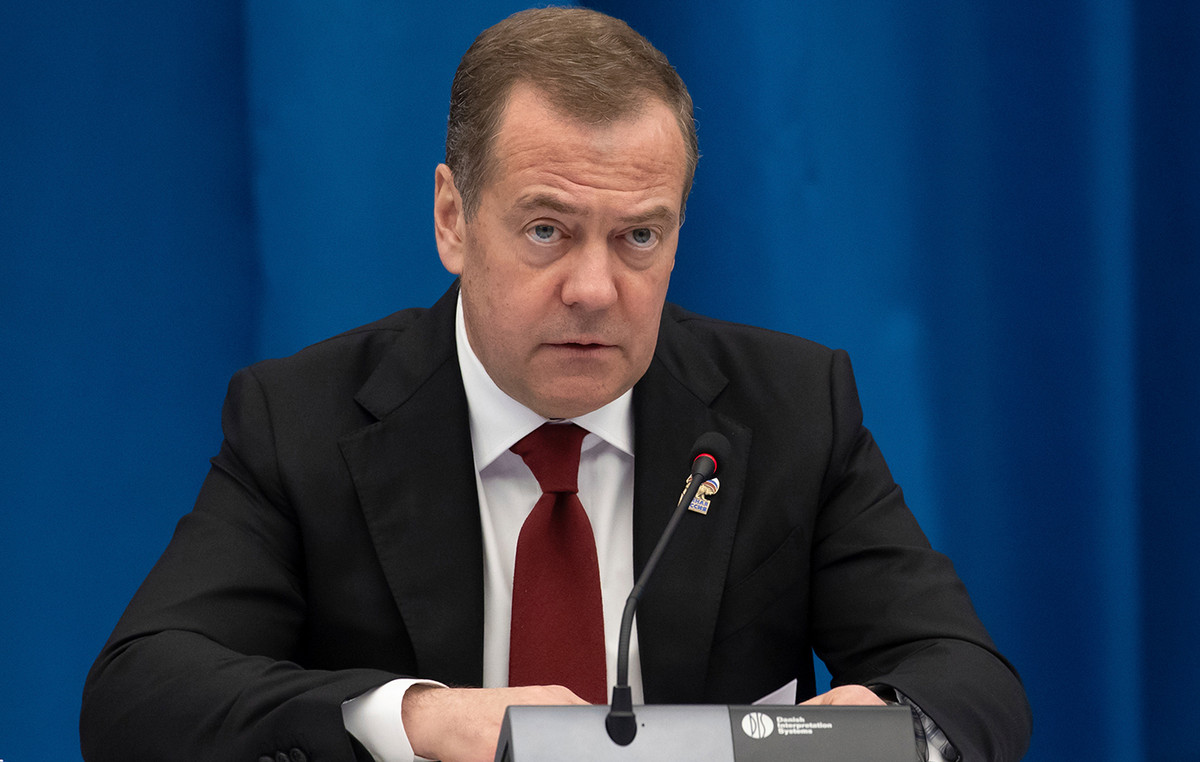- US Dollar erases losses on stable inflation figures.
- All CPI figures are in line with expectations, with no surprises.
- The US Dollar Index is trading in the mid-range of 102.00 and could trade in another range by the close of the session.
The US Dollar (USD) is trying to erase its earlier losses after the US Consumer Price Index (CPI) for July came in line with expectations. There were no surprises, which must be a bit disappointing for traders who have sold US Dollars in the past 24 hours after the US Producer Price Index (PPI) came in substantially softer on Tuesday. The reaction for now seems to be contained, although there could be more follow-through heading into the US session.
On the economic data front, all the data points for Wednesday have already been released. Thursday’s upcoming US Retail Sales figure will now gain importance as the CPI release was not a real market-moving event. Add to this the weekly jobless claims and suddenly Thursday could become very interesting.
Daily market summary: CPI brings no surprises
- The US Dollar is falling against the Euro, pushing the pair to 1.1029 in EUR/USD for the first time since January 2024 ahead of the release of the US CPI.
- Japan must look for a new prime minister as Fumio Kishida does not want to run for a second term.
- The Reserve Bank of New Zealand (RBNZ) surprised the market with a 25 basis point interest rate cut during the Asian session on Wednesday and the message that the rate cutting cycle has begun. RBNZ Chairman Adrian Orr even said that a 50 basis point cut was on the table for this meeting. A comment that sent the New Zealand Dollar down 1% against the US Dollar.
- At 11:00 GMT, the Mortgage Bankers Association (MBA) released its weekly index of mortgage applications for the week ending August 9. The previous week, it was up 6.9% with an even firmer 16.8% for this week.
- At 12:30 GMT, US consumer inflation data for July were released:
- The overall monthly CPI inflation rate remained unchanged at 0.2%. The annual rate rose from 3.0% to 2.9%.
- Core monthly CPI inflation rose 0.2% after 0.1% in June. The annual index softened to 3.2% from 3.3%.
- Equity markets are having a hard time interpreting the CPI release as bearish or bullish and are trading sideways for now.
- The CME Fedwatch tool shows a 47.5% chance of a 25 basis point (bp) interest rate cut by the Fed in September versus a 52.5% chance of a 50 bp cut. Another 25 bp cut (if September is a 25 bp cut) is expected in November at 31.5%, while there is a 50.8% chance of rates being 75 bp below current levels and a 17.7% chance of rates being 100 bp lower.
- The US 10-year benchmark rate is trading at 3.86%, erasing some earlier losses.
Dollar Index Technical Analysis: Are these inflation figures enough?
The US Dollar Index (DXY) has moved away from the crucial pivotal level of 103.18 following the surprise PPI release on Tuesday. From a technical perspective, a drop below 103.00 suggests that further downside is on the cards. The DXY will need to fall further, pushing the Relative Strength Index (RSI) into oversold territory to see broad support and send it back towards 103.00.
A two-level rally can be seen on the charts, with the first resistance (yes, again, the same level we have been talking about since last week) at 103.18, where the DXY has been unable to hold above for the past few days. Once the bulls can hold that level and move away from it, 104.00 comes into play. However, further upside is limited as the 200-day simple moving average (SMA) at 104.12 will put a damper on the short term.
On the downside, the oversold condition on the Relative Strength Index (RSI) indicator has eased on the daily chart and has room for a minor further decline. The nearby support is the August 5 low at 102.17. Once overcome, pressure will start building at 102.00 as a major psychological figure before testing 101.90, which was a pivotal level in December 2023 and January 2024.
US Dollar Index: Daily Chart
(This story was corrected on August 14 at 10:40 GMT to say Reserve Bank of New Zealand, not Royal Bank of New Zealand.)
The Fed FAQs
Monetary policy in the United States is directed by the Federal Reserve (Fed). The Fed has two mandates: to achieve price stability and to promote full employment. Its main tool for achieving these goals is to adjust interest rates. When prices rise too quickly and inflation exceeds the Fed’s 2% target, the Fed raises interest rates, increasing borrowing costs throughout the economy. This translates into a strengthening of the US Dollar (USD), as it makes the US a more attractive place for international investors to park their money. When inflation falls below 2% or the unemployment rate is too high, the Fed can lower interest rates to encourage borrowing, which weighs on the greenback.
The Federal Reserve (Fed) holds eight meetings a year, at which the Federal Open Market Committee (FOMC) assesses economic conditions and makes monetary policy decisions. The FOMC consists of twelve Federal Reserve officials: the seven members of the Board of Governors, the president of the Federal Reserve Bank of New York, and four of the eleven regional Reserve bank presidents, who serve one-year terms on a rotating basis.
In extreme situations, the Federal Reserve may resort to a policy called Quantitative Easing (QE). QE is the process by which the Fed substantially increases the flow of credit into a jammed financial system. It is a non-standard policy measure used during crises or when inflation is extremely low. It was the Fed’s weapon of choice during the Great Financial Crisis of 2008. It involves the Fed printing more dollars and using them to buy high-quality bonds from financial institutions. QE typically weakens the US dollar.
Quantitative tightening (QT) is the reverse process of QE, whereby the Federal Reserve stops buying bonds from financial institutions and does not reinvest the capital of maturing bonds in its portfolio to buy new bonds. It is usually positive for the value of the US dollar.
Source: Fx Street
I am Joshua Winder, a senior-level journalist and editor at World Stock Market. I specialize in covering news related to the stock market and economic trends. With more than 8 years of experience in this field, I have become an expert in financial reporting.








